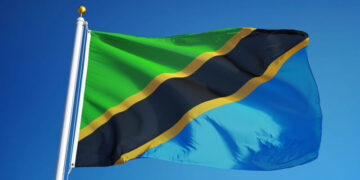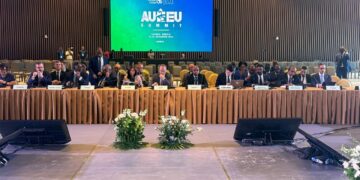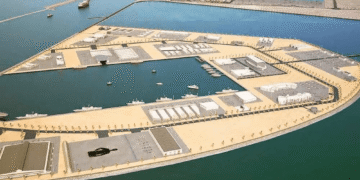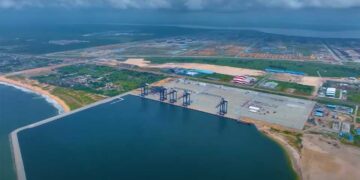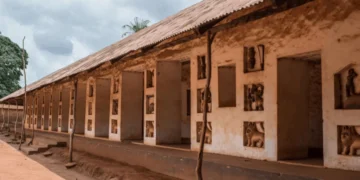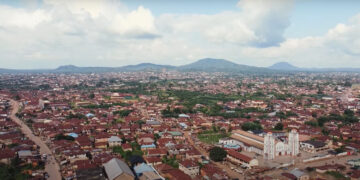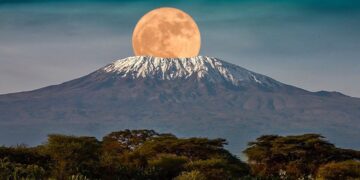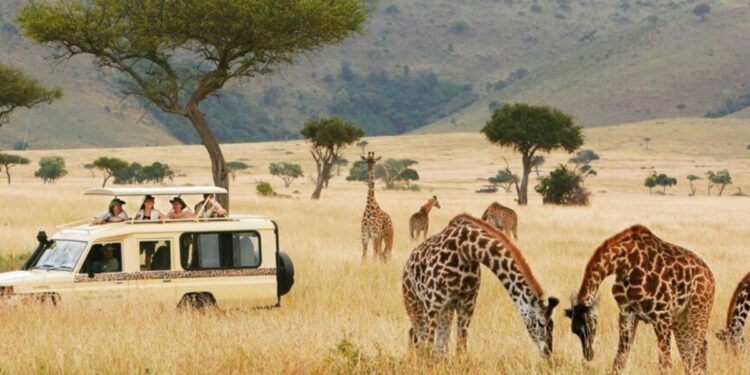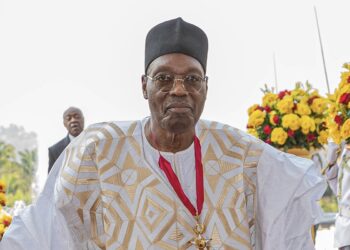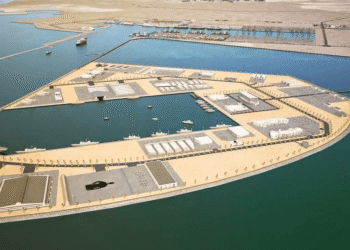Tourism has become the world’s third-largest export industry after fuels and chemicals and ahead of food and automotive products. From the last few years, there has been a great surge in international tourism, culminating in a 7% share of the world’s total exports in 2016. Instead of shipping goods across space, tourism involves the export of non-tradable local amenities, such as beaches, mountains, or cultural amenities, and local services, such as hotels, restaurants, and local transport, by temporarily moving consumers across space. According to the World Economic Outlook (WEO) Report, the global economy will grow an estimated 3.0% in 2023 and 2.9% in 2024. While this is higher than previous forecasts, it is nevertheless below the 3.5% rate of growth recorded in 2022, pointing to the continued impacts of the pandemic and Russia’s invasion of Ukraine and from the cost-of-living crisis.
On the one hand, a one-way causal relationship exists from tourism to development in countries having low levels of tourism specialization and development. On the other hand, a one-way causal relationship exists by which development contributes to tourism in countries with high levels of development and tourism specialization. Tourism, as an economic activity, is being used to help support or bolster an economy and regional development. Numerous organizations currently recognize the importance of tourism as an instrument of economic development. It was not until the late 20th century, however, when the United Nations World Tourism Organization (UNWTO), in its Manila Declaration, established that the development of international tourism may “help to eliminate the widening economic gap between developed and developing countries and ensure the steady acceleration of economic and social development and progress, in particular of the developing countries.”
The United Republic of Tanzania is the largest country in East Africa. It lies on the east coast of Africa between latitudes 1 and 11 degrees south of the Equator. It covers 945,234 square kilometers, comprising the mainland and the islands of Zanzibar and Pemba. Real GDP grew 5.3% in 2023, up from 4.7% in 2022, driven by agriculture, construction, and manufacturing on the supply side and private investments on the demand side. Tanzania is known for its wildlife parks, reserves, and long coastline. More than 30% of the land is in protected areas. There are 16 national parks, 34 game reserves, 38 game-controlled areas, and nine marine parks. It is home to two renowned tourism destinations: Africa’s highest mountain, Kilimanjaro, and wildlife-rich national parks such as the Serengeti. Tourism offers Tanzania the long-term potential to create good jobs, generate foreign exchange earnings, provide revenue to support the preservation and maintenance of natural and cultural heritage, and expand the tax base to finance development expenditures and poverty-reduction efforts.
The subsequent themes critically evaluate tourism diversification, policy, and strategies, how it has staged an impressive recovery after the COVID-19 pandemic, and in turn enhance the sector’s effectiveness in contributing to Tanzania’s Third National Five-Year Development Plan.
Role of Tourism Diversification in Revamping the Economy?
Tourism has become one of the major players in international commerce and represents, at the same time, one of the main income sources for many developing countries. This growth goes hand in hand with an increasing diversification and competition among destinations. Enhancing the economic impact of the tourism sector can be effectively facilitated through the strategic diversification of tourism markets. This approach not only expands the spectrum of tourism sources but also acts as a buffer against the volatility in tourist arrivals and associated revenues. By broadening the range of markets, tourism diversification serves as a resilient strategy, countering the sway of shifting consumer preferences and safeguarding against non-economic external shocks—ranging from geopolitical tensions to instances of terrorism—that might otherwise impede the steady flow of tourists and revenues.
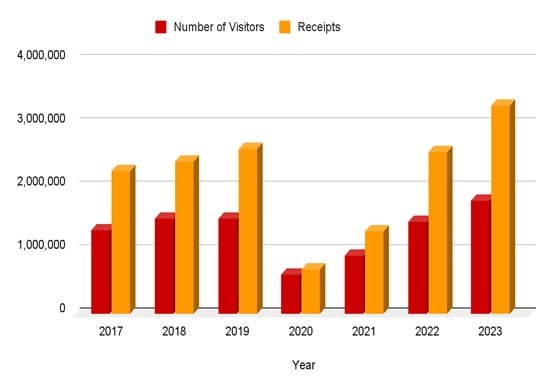
Beyond protection against shocks, economic diversification is increasingly recognized as essential for economic development, especially in low-income and resource-dependent countries, as it can help fuel economic growth and poverty reduction. Economic diversification also matters because, generally, it is accompanied by industrial upgrading due to technology diffusion and a movement toward higher productivity sectors and better paying jobs. Tourism appears to be particularly well suited to be part of developing countries’ diversification strategies because many low-income countries have favorable natural endowments and a large workforce willing to work in personal service jobs at modest wages. Tourism in Tanzania is synonymous with wildlife and national parks. In a typical seven-day package for a visitor, most of the time is spent in the national parks that are concentrated in the northern part of the country. There is a concern that the northern circuit national parks are becoming congested.
How Tanzania’s Tourism Policies are Shaping the Future?
Tanzania is a nation possessing a rich storehouse of biological diversity. Since the mid-1980s, following major reforms in foreign tourism policies, Tanzania has experienced tremendous growth in nature-based tourism. The highest institution that is charged with tourism matters is the Ministry of Natural Resources and Tourism (MNRT). Another significant milestone reached under the institutional reform is a revision of the National Tourism Policy in 1999, which was subsequently followed by the setting up of the Tourism Confederation of Tanzania (TCT) to represent the interests of the private sector. TCT is a private sector body that was intended to be the representative voice of the tourism private sector interests. Tanzania has begun to diversify its tourism offers through cultural tourism under the supervision of the Tanzania Tourist Board, aiming to promote rural livelihoods. Product development and service delivery are central to successful tourism development. Due to this, the national tourism policy attaches importance to human resource development. Many universities are now offering tourism-related degree programs to meet the ever-increasing demand for professionals in this field. In 2012, the government implemented a project to establish a new campus for the National College of Tourism.
Tanzania has a long history of implementing development plans since independence. In the course of the implementation of plans, the country experienced cycles of changes in political and economic scenes. In recent years, execution of development plans has mainly experienced challenges with respect to inadequate mobilization and poor predictability. These have been detailed in many reports and in the FYDP II main document (pp. 15-16; 22-23; 23-25 & 87-103). Tanzania’s Second Five Year Development Plan 2016/17–2020/21 (FYDP II) is the second of three five-year plans for sequenced implementation of the Long-Term Perspective Plan 2011/12–2025/26. Meanwhile, the FYDP II, unveiled in April 2016, acknowledges the importance of tourism to GDP, foreign currency earnings, and job creation. In 2021, the Tanzanian government introduced the Third National Five Year Development Plan (FYDP III; 2021/22–2025/26). The government said, ‘’The plan is a continuation of the government’s efforts in achieving the goals we set in the National Development Vision 2025 of our enduring exertion to further improve the standard of living for all Tanzanians.’’ However, financing has been a major challenge of implementing Development Plans Tanzania since independence. In the public sector, despite concern about inefficiencies in the use of public funds, the majority of Ministries, Departments, and Agencies (MDAs) cite funding as a key constraint to the delivery of public goods and services. The financial constraint is manifested mainly in under-funding priorities of public sector programs and projects, thereby impeding the quantity and quality of service delivery.
Tanzania’s Tourism Boom: What’s Driving the Revenue Surge?
Tanzania is a developing country, and its economy depends heavily on agriculture. The sector accounts for more than 40% of GDP, provides 85% of the country’s exports, and employs 80% of the total workforce. Apart from the agricultural sector, tourism, mining, and small-scale industries are increasingly contributing to the national economic growth. On the other hand, with its abundance of natural and cultural resources, the United Republic of Tanzania has gained international recognition for its nature-based tourism in Africa and the world. The Travel and Tourism Competitiveness Index by the World Economic Forum ranked the United Republic of Tanzania 1st in Africa and 12th worldwide regarding the quality of its nature-based tourism resources, as well as 32nd in Africa vis-à-vis its cultural resources. Tanzania’s tourism industry is on a remarkable comeback, witnessing a substantial recovery nearly four years after the COVID-19 pandemic impacted revenues.
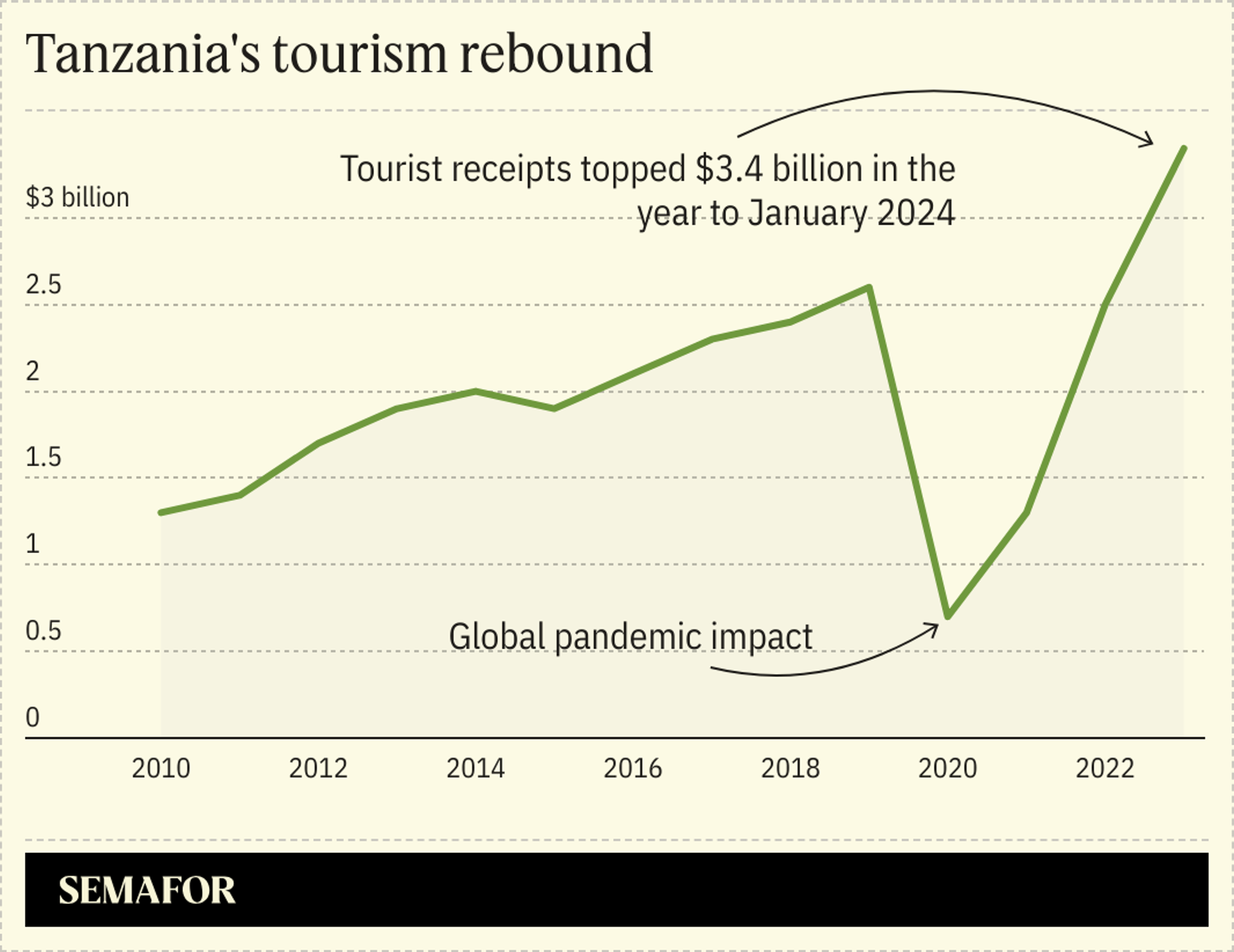
While the recent data from the Bank of Tanzania reveals that tourism has staged an impressive recovery, contributing $2.99 billion to foreign exchange earnings in July 2023, compared to $1.95 billion in July 2022. According to the Bank of Tanzania, this represents a 33% surge in service receipts, reaching $5.49 billion in July 2023, up from $4.12 billion in July 2022. The bank also noted that this resurgence in tourism and increased earnings from gold have played a pivotal role in boosting Tanzania’s service earnings to over $5 billion for the first time in its history. In 2023, travel receipts almost doubled to USD 2,826.5 million from USD 1,560.4 as the number of tourist arrivals rose to 1,590,433, higher than pre-pandemic levels, signaling a continued recovery of the tourism sector. On a monthly basis, service receipts increased to USD 397.8 million from USD 343.6 million in April 2022.
Although tourism had been among the country’s fastest-growing sectors before the pandemic, employing over 10 percent of the total workforce and serving as the largest single source of foreign currency. The revenue generated by Tanzania’s tourism sector in the year to July 2024, according to the country’s central bank. The figure was around $500 million more than the preceding year. The revenue growth was attributed to an increased number of tourists, which hit a record 2 million during the same period. It marks a full recovery from the travel restrictions imposed by countries during the COVID-19 pandemic. Visitor numbers fell to 600,000 in 2020. The largest number of tourists visited from the United States, followed by Italy and Germany. Thanks to The Royal Tour, a groundbreaking series of television specials produced and hosted by Emmy Award-winning US-based CBS journalist Peter Greenberg, showcasing nations in a way no visitor has ever seen them before. Tanzania: The Royal Tour, the 9th in the series globally and second in Africa, featured the President of Tanzania, H.E. Dr. Samia Suluhu Hassan, as its very special guide. Casting and post-production started in August 2021 through April 2022, when it premiered in New York, Los Angeles in the US, and then Arusha, Zanzibar, and Dar es Salaam in Tanzania.
Despite growth in the sector, some challenges do exist. These include limited access to cheap financing, inadequate tourism infrastructure, a multiplicity of levies, insufficient diversity in product offerings, and a lack of sufficient hotel and airport facilities. Also, tourism is also heavily focused on the so-called northern circuit, a region that includes the Ngorongoro Conservation Area, the Serengeti, Lake Manyara, Tarangire National Park, and Mount Kilimanjaro. Combined with Zanzibar, these destinations generate 80% of Tanzania’s leisure tourism. Poor infrastructure and a lack of marketing have so far held back the development of hugely promising destinations to the south.
Transformation Tanzania: Sustainable Tourism as an Economic Catalyst
In Tanzania, the economy has remained strong despite multiple shocks, although progress on poverty reduction has been slow, the World Bank’s Economic Update said. It added that the country’s fundamental challenge remains how to make growth more inclusive and generate more opportunities and better jobs for all Tanzanians. Experts have urged developing countries such as Tanzania that domains that are more amenable to policy interventions in the short term, such as the business environment or trade regulations, matter most in fostering productive linkages between tourism and the general economy. In contrast, fixed factors, such as land availability or long-term goals, such as advances in the level of development, have less influence. In order to achieve the Third National Five-Year Development Plan, international and local observers therefore agreed that Tanzania’s tourism industry is crucial for the sustainability of the country’s economy.
- Economic Growth and Diversification: The substantial increase in tourism earnings indicates the potential for tourism to contribute significantly to Tanzania’s economic growth and diversification. By investing in the development of tourism infrastructure, marketing, and promotion, Tanzania can further boost its tourism sector, providing a steady source of income for the economy. Therefore, in countries like Tanzania, it is suggested to move away from the reliance of park tourism and diversify more to other forms of ‘‘alternative tourism.
- Job Creation and Poverty Reduction: A thriving tourism industry creates employment opportunities, particularly in areas such as hospitality, transportation, and tour guiding. This can help reduce unemployment and alleviate poverty, especially in rural areas where many national parks and attractions are located.
- Conservation and Environmental Sustainability: Tourism revenue can be reinvested in conservation efforts, protecting Tanzania’s rich biodiversity and natural resources. Sustainable tourism practices ensure that natural attractions remain preserved for future generations while also benefiting local communities.
- Promoting Inclusive Growth: The data shows that various zones in Tanzania benefit from tourism revenue, but there are disparities in performance. Investment in less-developed zones, such as the Southern Highlands, can promote more inclusive growth by spreading the economic benefits of tourism across the country.
- Enhancing Competitiveness: To sustain and grow the tourism industry, Tanzania needs to remain competitive in the global market. This involves continuous improvement of infrastructure, services, and visitor experiences to attract more tourists and increase their spending.
- Public-Private Partnerships (PPP): Collaborations between the government and the private sector are essential for the sustainable development of tourism. In order to ensure increased and sustainable tourism revenue, Tanzania needs to promote private investments, especially in hotels and resorts, alongside the on-going government infrastructure development geared to opening new tourism destinations in the country.
- Allowing Flexibility in the Mode of Entry for Arrivals: This can further improve the diversification of tourism activities and its economic benefits. This is because flexibility encourages several visitors to choose the country ahead of other tourist destinations with stringent entry conditions. One way to improve flexibility is to encourage more free independent travelers (FITs).
- Improving Tourism Products in the Country: Moreover, there should be a policy that encourages developing tourism products that fit the demands of tourists from relatively high-income countries and also makes conscious efforts to market these products in the target countries. Lowering the cost of living and improving the exchange rate are also some of the areas that the government could work on to help grow the tourism industry.



